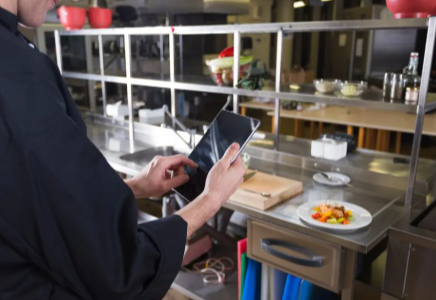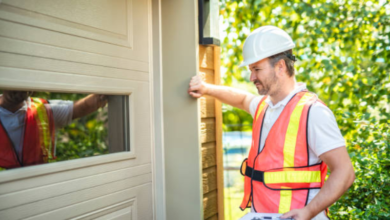How Kitchen Display Systems Accelerate Order Throughput and Enhance Back-of-House Coordination

Long ticket stacks, missed modifiers, and overcrowded pass stations can slow down service and frustrate both staff and guests. This challenge is especially felt by medium- and large-sized food businesses trying to scale their operations without sacrificing quality.
In this blog, we’ll explore the kitchen display system, designed to streamline order flow and improve back-of-house coordination. We’ll start with an overview of how a kitchen display system works and its importance. From there, we’ll dive into specific, actionable benefits: how it boosts throughput, enhances team coordination, integrates with POS and inventory systems, and key factors to consider when selecting a system.
Lastly, we’ll offer implementation tips and ROI insights tailored for U.S. restaurants, QSRs, cafes, and supermarkets.
What a Kitchen Display System Is
A kitchen display system (KDS) replaces paper tickets with digital screens that show orders from every sales channel, front-of-house POS, mobile ordering, kiosks, and third-party delivery. Instead of paper slipping or servers shouting orders, the KDS feeds a live queue to kitchen stations. Key behaviors it supports are: clearer modifiers, automatic course timing, and visible prep priorities. Industry overviews describe the KDS as the central communications hub for modern kitchens.
How it appears when used:
- Orders appear with modifiers and timestamps.
- Colors or icons indicate the status of an item (new, in progress, delayed).
- Bump bars or touch screens allow staff to mark items as completed.
With that shared view, teams stop guessing and start executing.
Faster Order Throughput
A kitchen display system shortens cycle time by organizing work for parallel prep. Instead of one cook waiting on a printed ticket, station-specific views route items straight to the grill, fryer, or garnish. Built-in timers and visual cues prompt handoffs to occur at predictable moments, reducing the time from order to plate. Reports collected across operators indicate measurable reductions in ticket time and improved throughput during peak periods.
Actionable ways:
- Parallel tasking across stations reduces idle time.
- Timers prevent overcooking and prompt plating.
- Auto-splitting sends grouped items to the correct stations immediately.
Faster throughput means more covers per shift without cutting quality.
Better Back-of-House Coordination
When the kitchen shares a single, real-time order view, common friction points fall away: lost tickets, unclear modifiers, and duplicate prep. The kitchen display system clearly shows modifiers, special requests, and allergy notes, which reduces remakes and voids.
For multi-course service, sequencing rules ensure courses arrive in order and at the right temperature. Operational teams report fewer conflicts at the pass and better communication between the expeditor and cooks.
Tactical coordination features to expect:
- Station-specific windows showing only relevant items.
- Visual alerts for delayed items or missing components.
- Easy modifier visibility so prep matches guest requests.
Clearer coordination turns rushes into predictable workflows.
Integrations: POS, Delivery Apps, Inventory
A kitchen display system delivers maximum value when it links the POS, online ordering platforms, kiosks, and inventory systems. Integration eliminates manual re-entry and synchronizes modifier logic, ensuring orders arrive at the kitchen wholly and accurately.
Inventory hooks can flag low-stock items and prevent accepting orders for unavailable menu items, trimming waste and disappointment. Built-in APIs or native POS integrations smooth data flow and speed troubleshooting.
Integration checklist:
- Native POS integration or robust API support.
- Delivery-channel mapping so third-party orders follow the same routing rules.
- Inventory triggers that block sold-out items and generate purchasing alerts.
A connected stack reduces manual steps and keeps stock and orders aligned.
AI & Analytics for Smarter Ops
Layering analytics and AI on top of a kitchen display system enables proactive operations. Machine learning models can forecast peak windows, suggest optimal preparation levels, and identify menu items that tend to generate bottlenecks. Analytics dashboards summarize time-to-ticket, station utilization, and common modifiers, enabling management to adjust staffing and prepare schedules accordingly. Early adopters in high-volume QSRs use these signals to reduce waste and balance labor across shifts.
Examples of AI-driven gains:
- Forecasts that cut over- or under-prep of perishable ingredients.
- Workload balancing that shortens individual station queues.
- Pattern detection that flags menu items with frequent voids or remakes.
Predictive insights let teams act before problems become visible.
Implementation Tips
A successful kitchen display system rollout begins with mapping station tasks and standardizing item names in the POS, ensuring orders display consistently. Pilot the system on a single high-volume station or shift, tune timers, split rules, and alerts, then scale. Short, hands-on training sessions for front- and back-of-house staff keep adoption friction low. Real-world operator playbooks emphasize small, measured pilots over broad overnight flips.
Step-by-step pilot plan:
- Map stations and decide screen placement.
- Standardize categories, item names, and modifiers in POS.
- Configure timers and routing rules for one station.
- Run a 2–4 week pilot, track ticket-time and error rates.
- Adjust rules, then roll out to additional stations.
Measured pilots reduce downtime and speed measurable gains.
Choosing the Right System
Operators should compare vendors based on key factors, such as POS compatibility, configurable routing, offline mode, reporting exports, and API access. For U.S. businesses with multiple locations, look for cloud reporting that consolidates metrics across sites and vendor support SLAs that cover business hours. Some vendors also bundle kiosk and self-order features that simplify multi-channel management. Cross-check references and test support responsiveness during demos.
Short vendor evaluation list:
- Confirm live POS integration or a tested API.
- Ask for a demo with sample modifiers and split rules.
- Test offline behavior during simulated connectivity loss.
- Validate reporting exports for inventory and payroll systems.
Select a system that aligns with your workflows, not the other way around.
ROI and Metrics to Track
Track time-to-ticket, order accuracy rate, remakes/voids, and food waste to assess the impact of the kitchen display system. Many operators report faster service, fewer errors, and lower consumable costs (no paper tickets). For multi-unit operations, aggregated reporting can reveal stock shortages and labor inefficiencies that drive improvements in margin. Use a 30–90 day window for initial ROI, then refine with seasonal comparisons.
Key metrics summary (to monitor):
- Average ticket time (order to done).
- Order error rate and type (modifier, missing item, wrong temp).
- Number and cost of remakes/voids.
- Food waste levels tied to forecasting accuracy.
Clear metrics turn vendor claims into measurable results.
Who Gains Most
Medium and large restaurants, QSR chains, high-volume cafes, and supermarkets with foodservice counters gain the most when multiple channels converge. Locations with drive-thru lanes, kiosks, or high volumes of third-party deliveries will see faster payback due to reduced errors and improved station routing. Central kitchens and multi-outlet operators benefit from consolidated reporting and inventory signals.
Short case pointers:
- QSRs: faster drive-thru and peak throughput.
- Multi-site chains: centralized reporting and consistent execution.
- Supermarkets with counters: reduced waste and clearer prep plans.
Select a kitchen display system that addresses the most significant bottleneck first.
Read Also: How Collaborative Hiring Reshapes Company Success
Quick Pre-Purchase Checklist
Before signing, confirm integration, station routing, offline behavior, and reporting export formats. Request reference sites in similar market segments and ask for a short trial or pilot contract with clear success criteria. Get SLAs in writing for support hours and average response times.
Checklist:
- Native POS integration or API documentation.
- Multi-screen routing and timer configuration.
- Offline/edge mode behavior confirmed.
- Reporting exports (CSV, API) for inventory and labor tools.
- Reference sites and support SLAs.
A focused checklist shortens procurement and avoids surprises.
Conclusion
Start small, scale fast. Begin with a focused pilot on a high-volume station or a single outlet. Track ticket time, error rate, and food waste for 30–90 days, then expand the rollout based on real results. For operators ready to move, the next practical step is a short vendor demo that maps a few live orders and simulates peak conditions. The Hashmato Kitchen Display System page offers a vendor view and real examples to review before demos.





